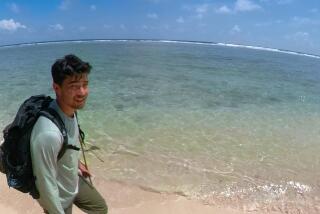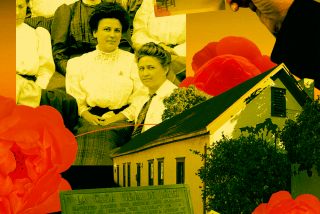Juggling Demands of Past, Present
- Share via
Re: “Smithsonian Scientist Faults Mission Project” (Dec. 24) and “Rare Floor Plan Offers a Blueprint of Mission Life” (Dec. 26):
1. It was, perhaps, premature for Dennis Stanford of the Smithsonian to allow himself to be brought into this dispute between the Mission San Buenaventura and the information furnished him by the archeologist Gary Stickel. In so doing, Stanford puts himself in the thought-provoking position of using the authority of his position at the Smithsonian to find fault with the mission project, based primarily on what might be called the one-sided view of Stickel, who was fired from his job as the archeologist at the mission.
2. Of great importance was The Times’ remark that it took 45 years to complete Mission Santa Barbara. This remark demonstrates that these missions were progressive, evolutionary enterprises that kept up with the needs of the people. This is still true of the “working” missions of today such as San Luis Rey, San Juan Capistrano, San Buenaventura, Santa Barbara, Carmel and others. They are working missions first, and historical treasures second.
So the question arises: Why should Mission San Buenaventura be forced to cease operating as a working mission in a 1997 time frame, and be returned to one of its many earlier time frames, circa 1839, so as to satisfy an archeologist? This question becomes all the more important since 90+% of the archeological investigation is already completed and the construction of the new school is designed to enable further archeological investigations to take place.
3. Not withstanding the discovery of the “rare floor plan” drawn by Fernando Librado, a Chumash Indian who was born at Mission San Buenaventura in 1839 and worked around the mission as a boy, the fact remains that Mission San Buenaventura was founded in 1782. This leaves 57 years between the time of the founding of the mission and the birth of Fernando Librado. Add another 73 years between his birth and the beginnings of the anthropologist John Peabody’s research into the descendants of the Chumash, and we are left with a sketch, which represents the floor plan of the mission quadrangle, drawn some 60 years after the mission was founded, and drawn from memory by Librado around 1912, some 73 years after he was born.
4. No one doubts the value of these sketches. However, the design of the new school allows for more archeological excavations. There is plenty of opportunity after the completion of the school for further archeological studies, but not at the financial expense of the parishioners at the mission. Stickel’s determination--as The Times reports--to stop the construction of the school becomes highly questionable, therefore, in that his demands seem to far exceed an archeological study of the mission and its grounds.
PATRICK R. HUGHES
Ventura
* In your Dec. 26 article about our discovery of sketches describing the floor plan and room functions of old Mission San Buenaventura, the impression was mistakenly created that I now feel satisfied with the expansion of the Holy Cross School over the original room foundations and associated archeological deposits.
In fact, my opinion has not changed. I continue to believe that the ruins of the city’s and county’s most important historical landmark should be preserved for posterity without any construction on top.
Properly conserved and interpreted as the educational resource it truly is, the mission site has the potential to become a major asset for the city of San Buenaventura. It is my fervent hope that the church, the city administration and the general public will come to appreciate this destiny and find a way to improve the Holy Cross School without compromising the integrity of the remaining foundations of this nationally important site.
JOHN R. JOHNSON
Santa Barbara


